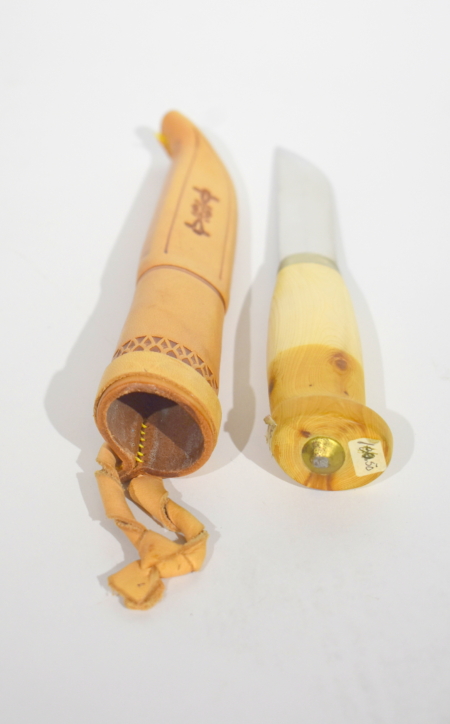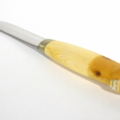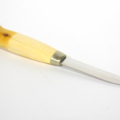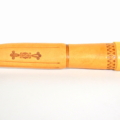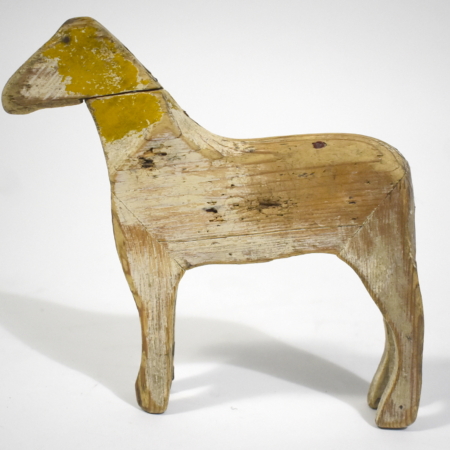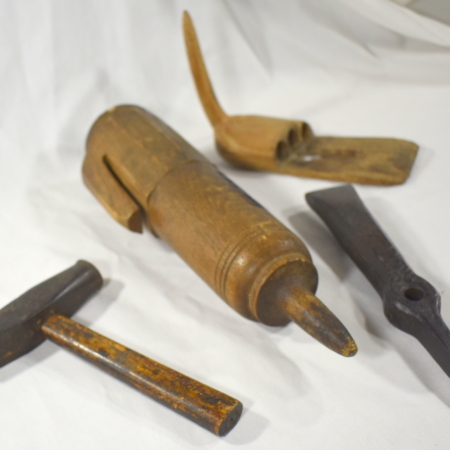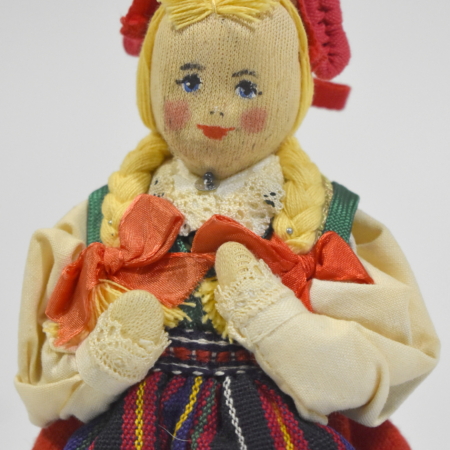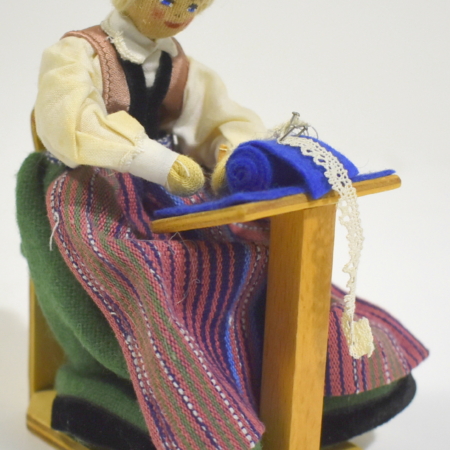Sámi knife
This Sámi knife (Stuorra niibi = “big knife”) with birch handle and reindeer-hide sheath has a tooled design and a belt-hanging loop. The label indicates it was made by “Einar.”
The Sámi knife has a long, wide, and strong blade that is designed for light chopping tasks such as de-limbing; brush clearing; cutting small trees for shelter poles; and bone-breaking and butchering tasks. It is sometimes used as a substitute for an ax for chopping and splitting small amounts of firewood from standing dead trees. This is essential, especially when all the dead and fallen wood is buried underneath many layers of snow. Typical Sámi knives have a blade length ranging from 7.9 inches to 18 inches.
The handle is generally made from birch for better grip when used in snowy conditions. Also, this provides good control over the blade, particularly when handling the knife with gloves or while the hands are numb.
The Sámi people typically use two knives: the smaller called a buiku or unna niibaš (“small knife”); while the larger “Sami knife” is called stuorra niibi (“big knife”). An even larger version known as a väkipuukko (or sax) is similar to a seax (an Old English word for “knife” which is actually a type of small dagger or sword used by the Germanic people of the Early Middle ages, especially the Saxons, whose name derives from the weapon).
The knife and sheath at Gammelgarden were handmade in the early 2000s and sold at the Jokkmokk’s market. On the first weekend in February, every year since 1606, Jokkmokk’s market is held. Apart from world-class Sámi art, culture and handicraft, visitors are usually greeted by proper, cold winter weather. Sámi people come from Sweden, Norway, Finland, and Russia to go to this annual gathering.

